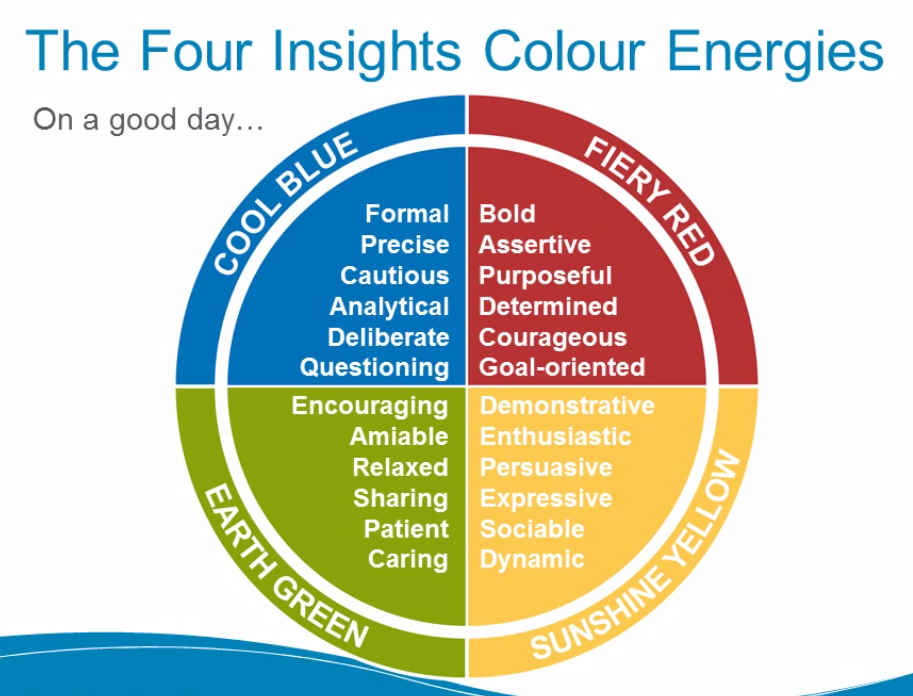Most are made up and silly.
The only one I’ve liked was in college I did a “communication style” one. Where it showed a bunch of different like emails, posts, and conversations and asked which you preferred to receive and which you were likely to write.

10 years later I still think about it, cause the goal of the work was to talk about how if you’re a certain communication style what to keep in mind with communicating with others. Like tips to not get frustrated with yellows who don’t care about facts when sending emails and how to write emails that don’t bore and frustrate people if you’re blue. (I’m blue green. I can sometimes write long emails)
I thought about it the other day cause a guy was complaining about all these emails that didn’t seem to say anything, they were just about feeling good, and he just wanted them to spit it out. Which corresponded to firey red getting mad at green.
So with that context, do you have any that actually had an impact on you?


I’m kind of a fan of the True Colors system but not because I “believe it”. More so that I just like that it makes you stop and consider how other people you’re interacting with might consider your behaviors and vice versa.
Our exercise at work first required you to classify yourself, then everyone else voted to classify you. So you could get a picture of how you can see yourself compared to how others see you.
I think what helps the most for facilitating the conversation is that it groups traits that are similar under a single color, so you can quickly say “I’m gold, I think this other person is green”, then start diving into how one set of actions might be perceived by the other, etc. We didn’t take a personality test. We just went straight in with “here’s what I think I am”, so there’s no questionnaire pigeonholing you into something you might not identify with.
It helped me interact with my co-worker (and close friend outside of work), because he’s very impulse driven and constantly spitting out 200 line proof-of-concept things. But they’re messy and buggy and don’t have any safety rails and all kinds of other things. Where as I’m much more analytical, filing code changes to him for things like considering null inputs in fields, or to fix spelling mistakes (that one is more anal than analytical, but whatev).
By doing this classification exercise, we were able to see beyond “dude wtf are you doing you look at all this wrong stuff” and we’re able to consider how each of us worked was causing stress for the other. By realizing that and incorporating it to our work we were able to stop getting bogged down in arguments of really specific things and could stay focused on the general problem we were trying to solve.
My favorite part of the whole exercise when we did it at work was all of our managers said that they are Blue (considerate of others feelings, etc) where as everyone that reported to them said they were Gold (organized, respect authority), like ruthlessly Gold, and sometimes with a hint of Orange because they change focus of the team every time a new “issue” comes up before we’d finished resolving the open ones. It made me realize that management isn’t intentionally shitty. They’re just delusional to the point that they don’t even see how their actions are nothing like their intentions.